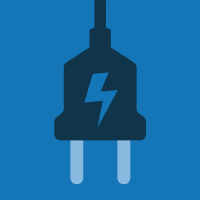Topic Menu
► Topic MenuTopic Editors


Market Integration of Renewable Generation
Topic Information
Dear Colleagues,
Adapting market designs to the intermittent nature of renewable generation is a process that must have the reduction in forecast error and the avoidance of substantial real-time imbalances at its core. However, flexibility is the key to guarantee the economic viability and security of the supply of carbon-neutral power systems; being aggregators, citizen energy communities, and new flexible players, they are important agents of future power systems. Indeed, with increasing penetrations of distributed generation, the distribution system operator has a major role to play in facilitating the active participation of local players, accommodating new distributed generation and transitioning to a more flexible and democratised power system where smart grid services, self-consumption, smart meters, local trades, peer-to-peer markets, and new marketplaces and products will be required. Therefore, we invite you to submit your research or review papers considering (but not limited to) the following subjects:
- The impacts of increasing penetrations of renewables in national/regional markets;
- New market designs, products, and rules for decarbonised day-ahead and intraday markets;
- Full investment-recovery of renewables in liberalized markets without externalities;
- Decentralised investment incentive mechanisms for a net-zero electricity system;
- Improving forecasting and information transparency in the new market designs;
- The role of aggregators, virtual power plants, local energy communities, and new flexible players in the road to carbon-neutral and strongly liberalised power systems;
- New designs of local energy and flexibility markets operating in the distribution grid level;
- New local marketplaces, innovative flexibility services, and redesign of products;
- The role of transmission networks and cross-border exchange in market integration and coupling.
Dr. Ana Estanqueiro
Dr. Nikolaos Chrysanthopoulos
Dr. Hugo Algarvio
Topic Editors
Keywords
- citizen energy communities
- electrification and sector coupling
- energy markets
- electricity market reforms
- energy sustainability
- flexibility markets and flexible players
- forecast errors, energy imbalances and net load
- local trades and pear-to-pear markets
- new market designs, rules and marketplaces
- renewables policy and incentives
Participating Journals
| Journal Name | Impact Factor | CiteScore | Launched Year | First Decision (median) | APC |
|---|---|---|---|---|---|

Electricity
|
- | 4.8 | 2020 | 27.9 Days | CHF 1000 |

Energies
|
3.0 | 6.2 | 2008 | 16.8 Days | CHF 2600 |

Modelling
|
1.3 | 2.7 | 2020 | 18.9 Days | CHF 1000 |

Sustainability
|
3.3 | 6.8 | 2009 | 19.7 Days | CHF 2400 |

Wind
|
- | - | 2021 | 35.7 Days | CHF 1000 |

MDPI Topics is cooperating with Preprints.org and has built a direct connection between MDPI journals and Preprints.org. Authors are encouraged to enjoy the benefits by posting a preprint at Preprints.org prior to publication:
- Immediately share your ideas ahead of publication and establish your research priority;
- Protect your idea from being stolen with this time-stamped preprint article;
- Enhance the exposure and impact of your research;
- Receive feedback from your peers in advance;
- Have it indexed in Web of Science (Preprint Citation Index), Google Scholar, Crossref, SHARE, PrePubMed, Scilit and Europe PMC.


